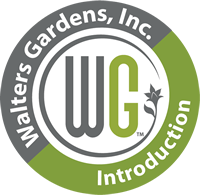Spigelia marilandica 'Apple Slices' CPBRAF PP36254
Slices Series



Common Name: Spigelia
Add a "slice" of this native wildflower to your garden! The tubular flowers appear for many weeks in late spring and early summer. The red and orange colors, coupled with the flower shape, are popular with Hummingbirds and can be used to attract the elusive bird (among other pollinators) to your garden. This woodland perennial grows from sun to shade and is long-lived once established. Spigelia will be more floriferous in full sun, but will also need more moisture to stay looking nice. Filtered sun is recommended in southern regions. Slices Spigelia are self-cleaning, meaning old flowers fall to the ground rather than drying to the stem. 'Apples Slices' has dark, wine red flowers.
Spigelia is underutilized in the landscape due to limited availability, but it's poised to make an explosion in popularity. Why? It's a very versatile perennial-it grows naturally in either sun or shade. This perennial can be found growing in the wild in woodlands and along streambanks throughout the Eastern United States. It's wildly popular among wildflower enthusiasts and highly sought after.
72ct Plug Tray |
Grade #1 Bare Root |










